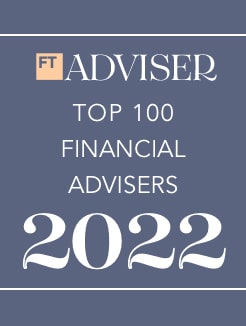Stock markets are performing well, supported no doubt by policymaker’s continued support, and consumer confidence returning. Such talk of stock market bubbles is widespread. However, are these bubbles about to burst, or is there more to take account of? Julian Broom, our Chief Investment Officer, explains.
Google searches for “stock market bubble” are at their highest for over a decade. Whether it’s bond bubbles, equity bubbles, tech stock bubbles or bitcoin bubbles, a routine theme abounds; all are cited as just about to burst. It’s certainly true that stock markets have defied the direction of fundamentals over the past 12 months. For example, global listed company earnings fell by about 15% in 2020, a long way below the 10% increase predicted at the start of the year. Despite this the MSCI World benchmark is up 18%. It’s almost as if the pandemic never happened.
We’ve definitely been surprised by the strength of the market rebound. Such gravity-defying performance is widely attributed to the influence of central banks. The announcement of a likely $5tn of global annual asset purchases, almost three times previous peaks, turned financial markets around last March. But, in seeking to minimise the impact of the pandemic, are central banks helping to inflate a new generation of equity bubbles?
A look back at bubbles
To help answer this question, it’s worth looking at the most famous stock market bubbles of the past 40 years — Japan in the late 1980s; Nasdaq/S&P in the late 1990s; emerging markets in 2007. The associated equity indices almost tripled in the three years up to those peaks and then at least halved in the two years afterwards. Right now, the Nasdaq is up 83% over the past three years – certainly cause for concern – although the broader S&P index is up 36% over the same period. Hot, but not necessarily a bubble, for comparison it rose over 90% in value between 1997 and 2000. Major indices outside the US also currently feel far less ‘bubbly’. The emerging market index is up 12% over three years and the Japanese Nikkei up 20% whilst the German Dax is flat.
Importantly for many Sterling investors, the FTSE 100 is down 14% over the same period. Before its last big crash it rose 70% in the three years to its 2000 peak. By far the biggest difference with past bubbles is that fixed income offered a more obvious alternative when stock markets started to crack. Government bonds yielded in most cases 5-6%, not the virtually 0% we see today. Indeed, it’s fair to argue that rather than equities it’s the fixed interest market that is exhibiting bubble characteristics.
Chasing bubbles
Central banks remain committed to locking in low bond yields; that’s the whole point of their support programmes, known as quantitative easing. Equity markets may drop when they dial down asset purchases or if they lose control of the fixed interest markets, but that moment could still be some way off. Obviously, we’d never advise anybody to chase a bubble as it could burst at any time. But if absolute valuations were to hit previous highs, then headline US equity indices could rise another 50-100%. If we measure relative valuations (against bond yields), then even the Nasdaq looks cheap whilst the UK trades on its cheapest valuation relative to government gilts for 100 years.
Equity bubbles don’t typically burst on the first hint of tightening from central banks. In fact, they act more like runaway trains that misallocate capital, distort the asset management industry and end investment careers. And as a result, they take some stopping. For these reasons, we’re wary of making the call to say that the ‘bubble will burst soon’. There are a range of concerns currently out there, but the stock market level is far from the scariest.
To discuss any aspect of your own investment portfolio please get in touch.




